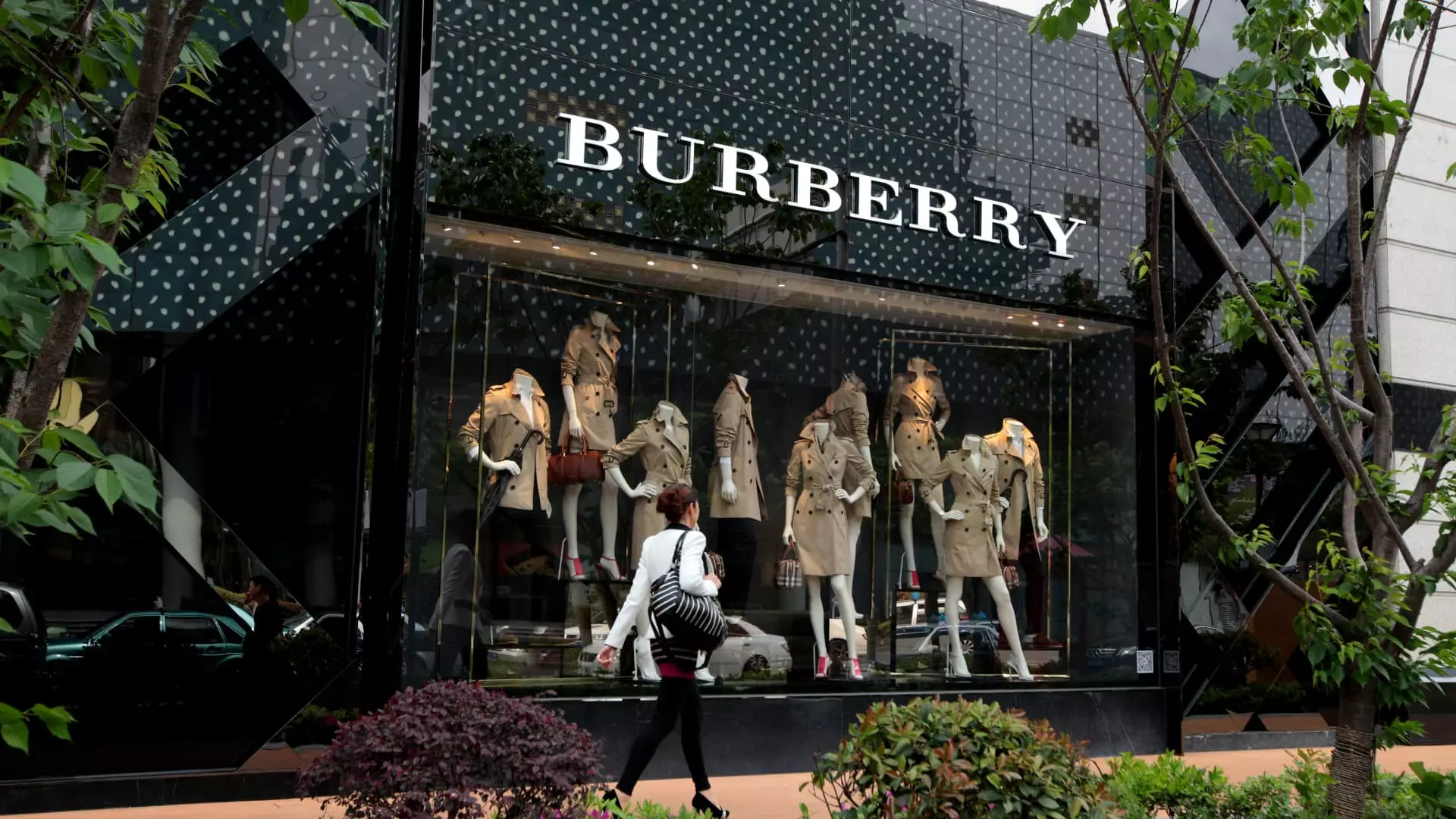Burberry, a stalwart of British luxury fashion, finds itself at a pivotal junction as it grapples with declining sales and a shifting market landscape. The company’s recent announcement of the “Burberry Forward” strategy marks an ambitious attempt to rejuvenate its brand identity and reconnect with its core offerings. The decision to focus on heritage designs and signature items signifies not only a response to financial pressures but also a broader industry trend that prioritizes authenticity and quality over fleeting trends.
The announcement was met with immediate positive feedback from investors, with Burberry’s stock surging over 22%—its largest single-day gain ever. Despite this brief resurgence, the company faces significant challenges as it has experienced a 39% decline in share prices year-to-date. Analysts are cautiously optimistic, viewing this strategic overhaul as a potential turning point for a brand that has struggled to maintain relevance in a saturated luxury market.
Under the leadership of new CEO Joshua Schulman, who previously helmed Michael Kors, Burberry’s renewed commitment to its heritage suggests a strategic recalibration that aims to rediscover what has made the brand iconic. Schulman’s assertion that Burberry has drifted from its core products is a pointed acknowledgment of the brand’s missteps in recent years, which included an overemphasis on niche items that failed to resonate with a broader consumer base.
The “elevation strategy,” which sought to enhance the brand’s image through premium pricing and exclusive offerings, has now been identified as a factor that disconnected Burberry from its loyal customers. This introspection is crucial—not only does it highlight the challenges the brand has faced, but it also sets the stage for a renaissance centered around its most celebrated items: the quintessential Burberry trench coats and classic scarves that have adorned fashion icons for decades.
The luxury market is currently experiencing a contraction, with predicted downturns in the personal luxury goods sector of up to 2% this year. This broader environment has necessitated a reevaluation of brand strategies across the industry. Analysts suggest that Burberry is not alone in this struggle; many brands face the dual challenges of evolving consumer expectations and increased competition from fast-fashion retailers.
In this climate, Burberry’s focus on its heritage presents an opportunity to appeal to consumers’ desire for authenticity in a world often dominated by superficiality. However, this pivot must be delivered with careful execution to translate into tangible growth and customer loyalty. Schulman’s promise of “urgency” in addressing the brand’s direction reflects an understanding that time is of the essence in modern retail.
Analysts Weigh In: Optimism with Caution
Industry professionals have responded favorably to the strategic overhaul, suggesting that Burberry’s renewed emphasis on its heritage may bolster its competitive edge against rivals. Analyst Piral Dadhania remarked that honing in on outerwear aligns with a consolidated strategy that offers authenticity in a market segment that is relatively less overcrowded. This insight embodies the essence of what modern luxury consumers seek—genuine craftsmanship and iconic designs over ephemeral trends.
Mamta Valechha’s perspective on this shift as a “turning point” serves as a reminder of Burberry’s storied legacy, urging the brand to harness its British roots to appeal to aspirational consumers. Similarly, Thomas Chauvet from Citi anticipates vital changes across product design, pricing, and communication strategies, hinting at a comprehensive framework aimed at reaffirming Burberry’s position in the luxury market.
However, as Burberry embarks on this journey of reinvention, analysts like Yanmei Tang caution that success will hinge on the alignment of Schulman’s strategic vision with the creative direction of the company’s design team. The synergy between business strategy and artistic creativity will be essential to navigate the shifting sands of consumer preferences effectively.
The Path Ahead: Navigating Challenges and Opportunities
The path forward for Burberry will undoubtedly be fraught with challenges, yet it presents a fertile ground for exploration and growth as the brand reinvigorates its offerings. The amalgamation of heritage and modern luxury could create a unique value proposition, attracting both longstanding devotees and new customers eager to embrace the brand’s iconic status.
By recommitting to its roots while deftly incorporating modern sensibilities, Burberry has the potential not just to stem the tide of declining sales but to set a new standard for excellence within the luxury segment. As the company navigates this critical juncture, one thing remains clear: the journey back to the top will require a blend of urgency, creativity, and a resolute focus on what makes Burberry—Burberry.

